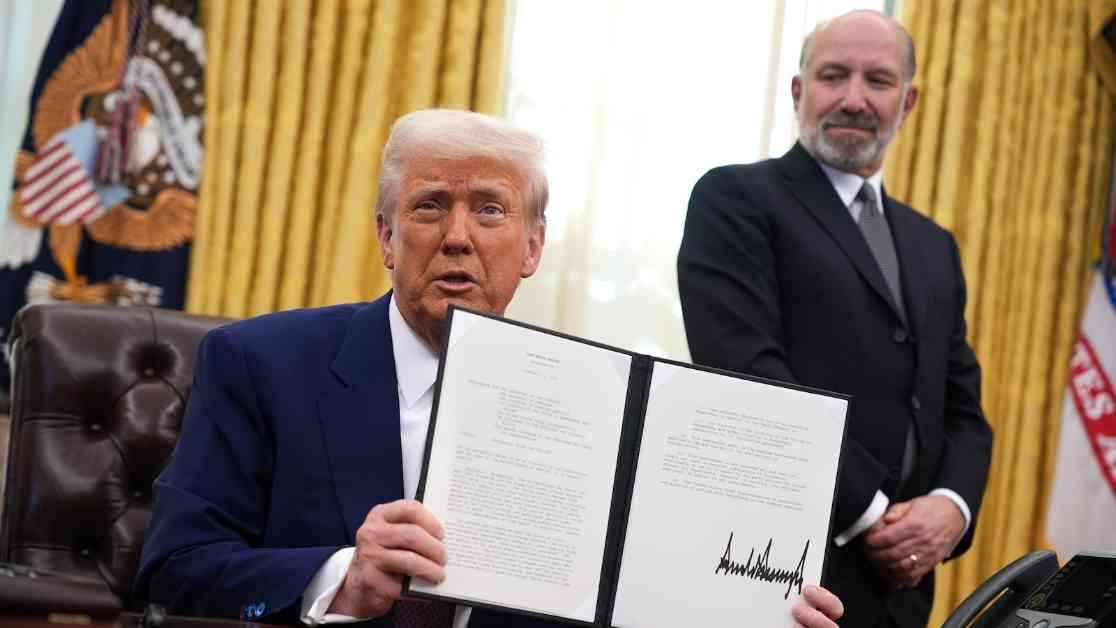President Trump’s recent memo has sent shockwaves through global trade, with the administration announcing plans to impose reciprocal tariffs on the United States’ trading partners. The move aims to level the playing field by matching the duties imposed on American products, a strategy that Trump believes will benefit the U.S. economy in the long run.
The senior administration official hinted at a tailored approach, explaining that the reciprocal tariffs would be customized based on each country’s trading behavior. This means that tariffs will be imposed on nations that reflect similar duties imposed on American goods, ensuring a fair and balanced trade relationship with the United States.
Trump’s previous tariff announcements targeting China, Mexico, and Canada have already made waves in the global economy. While the 10% tariffs on China have taken effect, the administration has paused the 25% tariffs on Canada and Mexico. Moreover, 25% tariffs on steel and aluminum are set to be implemented next month, raising concerns among economists about potential inflation and increased consumer prices.
During a press conference in the Oval Office, Trump acknowledged the short-term impact of tariffs on prices but emphasized the long-term benefits for American jobs. The administration is keen on addressing five key factors in determining reciprocal tariffs, including tariffs on U.S. products, unfair taxes imposed by trading partners, costs to American businesses, exchange rates, and any other trade practices deemed unfair.
Key officials involved in this tariff action include the commerce secretary, United States Trade Representative, treasury secretary, and Homeland Security secretary. Trump has nominated Howard Lutnick as the Commerce Department head and Jamieson Greer as the U.S. Trade Representative, highlighting the administration’s focus on addressing unfair trade practices on a case-by-case basis.
The timeline for tariff implementation remains fluid, with officials hinting at a rapid rollout starting with countries that have the highest trade deficits with the U.S. The administration aims to complete studies by April 1, paving the way for Trump to make decisions on tariffs by April 2. Developing countries like India, Brazil, and Southeast Asian nations could be hit hardest by these reciprocal tariffs, raising questions about the potential impact on global trade dynamics.
One of the key questions looming over the implementation of reciprocal tariffs is how Trump will leverage them in negotiations with other world leaders. Officials hope that these tariffs will spark discussions between nations, with the president signaling a willingness to lower tariffs if other countries reciprocate. As the world watches the unfolding trade drama, the future of global commerce hangs in the balance, with the U.S. taking bold steps to reshape its trade relationships.


